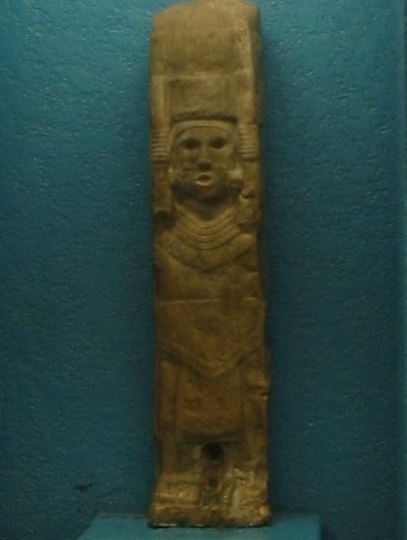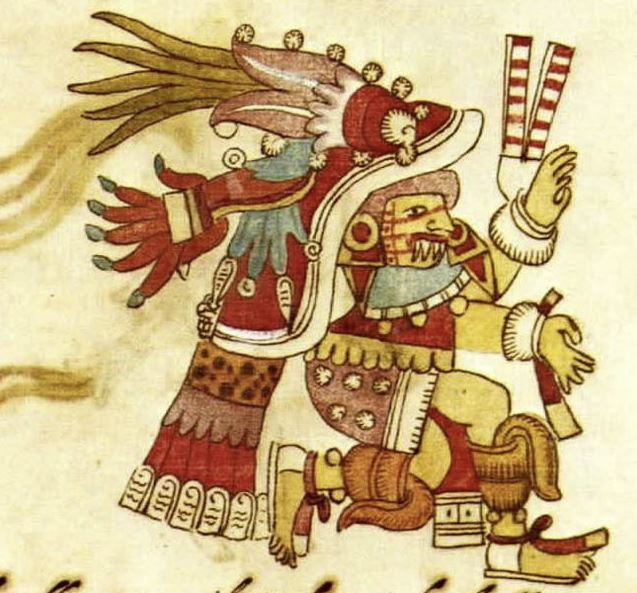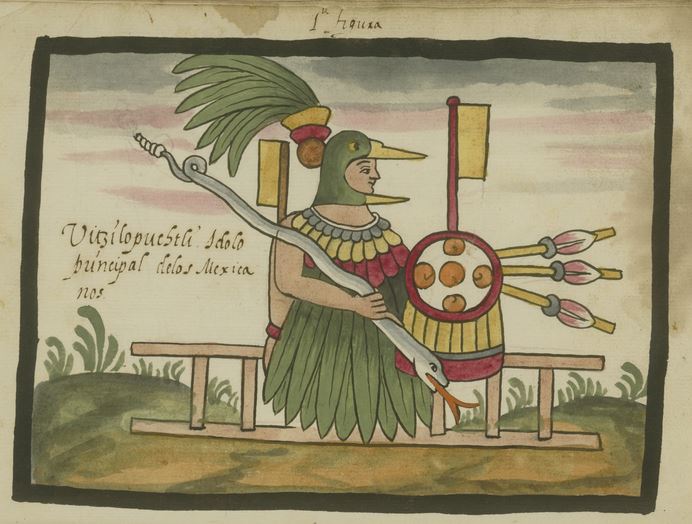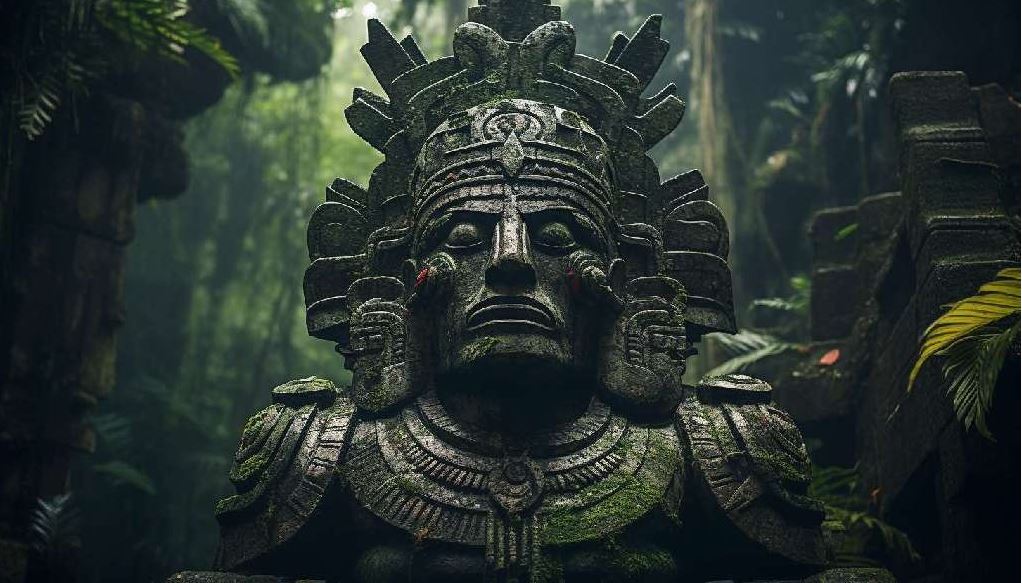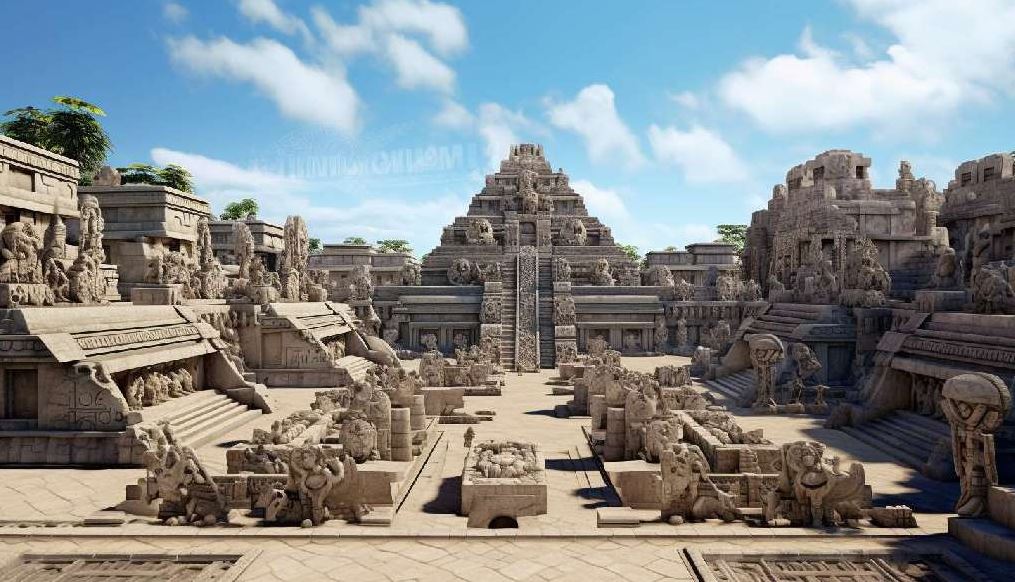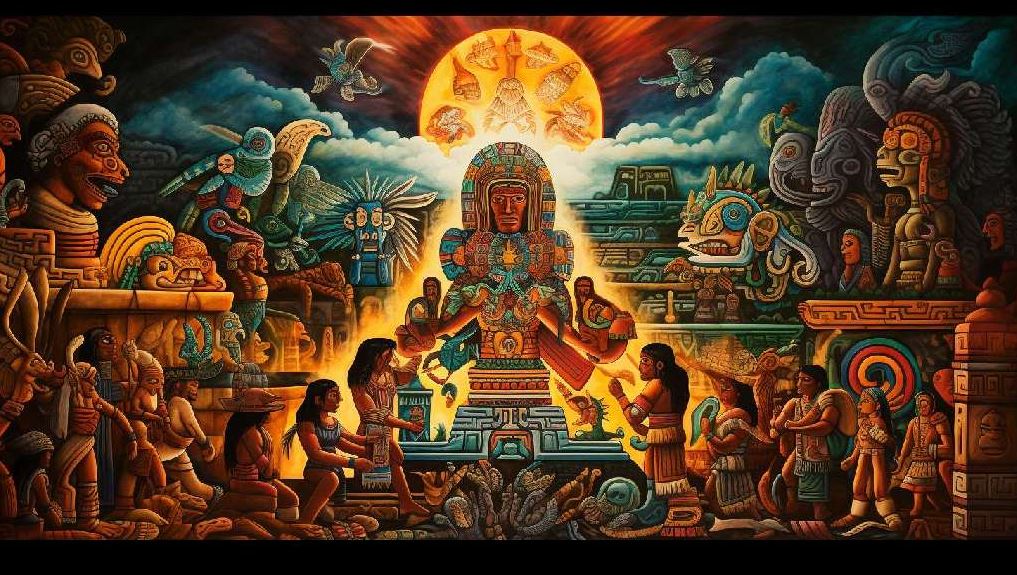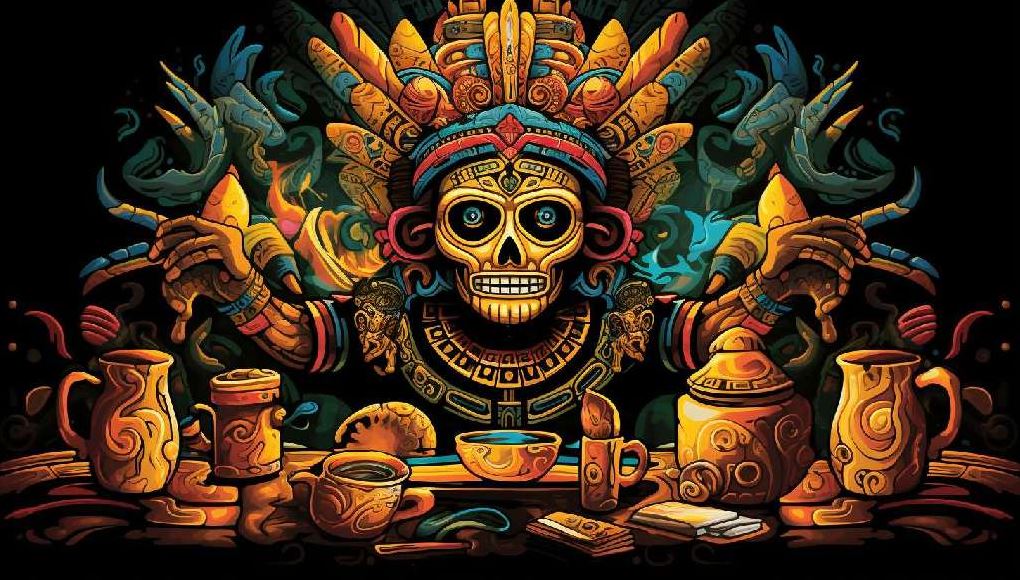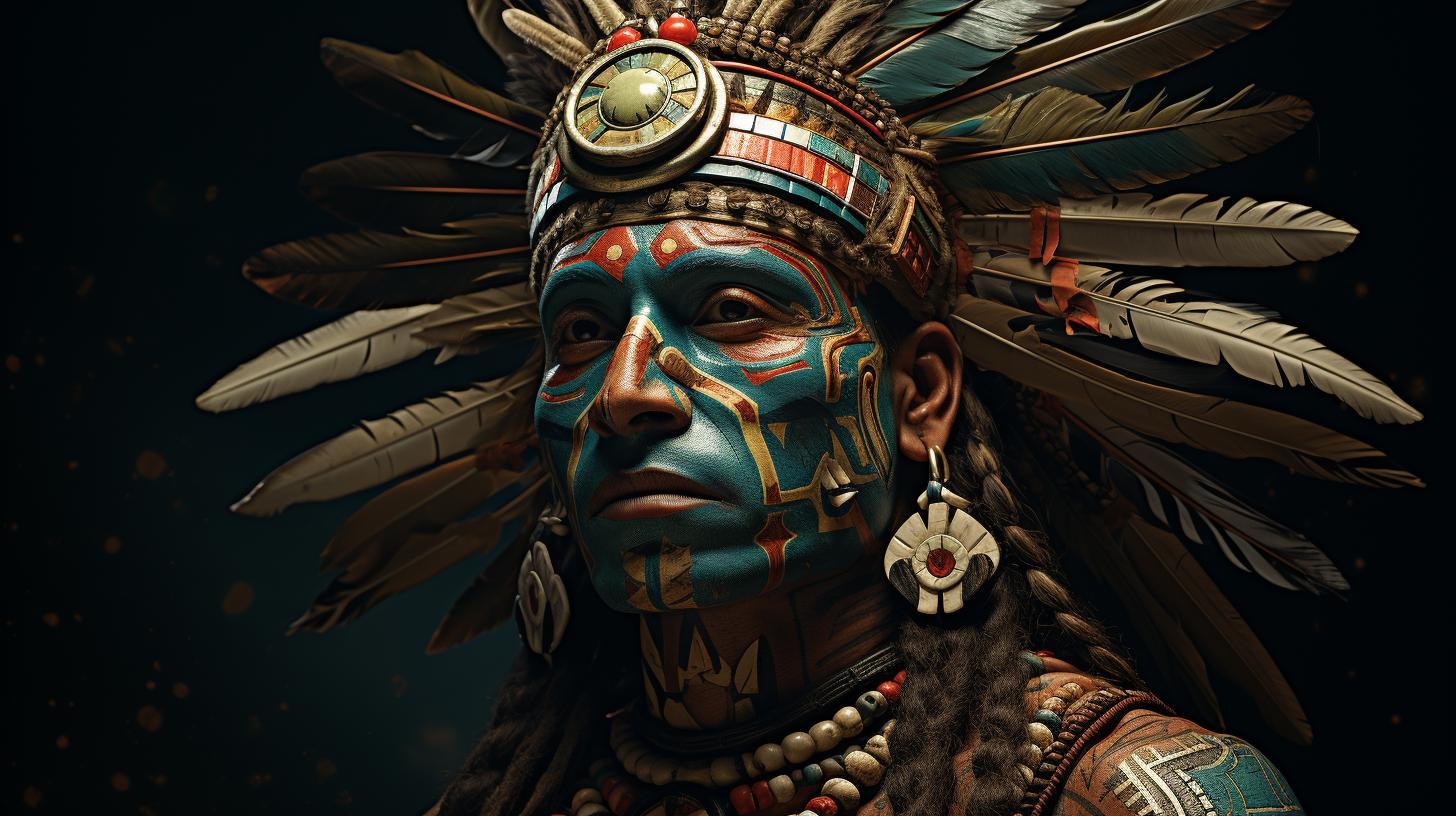The Aztec god Mixcoatl of Hunting and the Sky
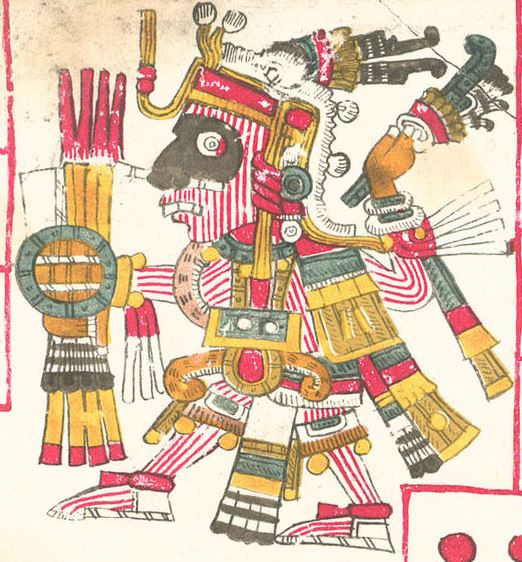
The Aztec god Mixcoatl was worshipped by many populations of Mesoamerica. In particular, he was the main god of the Chichimecs and of the Otomi. Among them, he was often referred to as Camaxtl.
Under this name, his cult was particularly strong in the regions of Tlaxcala and Huejotzingo. He was introduced into the Aztec pantheon, too, but there his role was usually considered less important with respect to other Aztec deities, such as Huitzilopochtli.
What is Mixcoatl the god of?
The Aztec god Mixcoatl was mainly associated with hunting. This fact is reflected in his iconography since he is often represented carrying a bow, some arrows, and other hunting tools.
Besides, he was associated with the night sky, in particular with the Milky Way and with stars. This link, also, is displayed in his portraits, since he is sometimes depicted with stars on his face.
A representation of the Aztec god Mixcoatl
The Aztec god Mixcoatl: Origin of the Name
The name “Mixcoatl” comes from the Nahuatl words “mixtli”, which means “cloud”, and “coatl”, which signifies “serpent”. Mixcoatl’s name, therefore, means “cloud serpent”.
It is surely a reference to Mixcoatl’s link to the sky and, in particular, to the Milky Way, which was actually seen by Aztecs as a giant snake in the night sky.
As we have said in the introduction, Mixcoatl was known under the name Camaxtl, too. This word comes from the Nahuatl “camaz”, which means “deer sandal”, and the suffix “-atle”, which means “without”.
Mixcoatl’s second name might therefore signify “without deer sandals”. We might speculate that it was referred to Mixcoatl’s role as god of hunting: in fact, it is plausible that hunters used to avoid shoes since they could make noise and render them more hearable by the animals.
The milky way is usually associated with Mixcoatl
History of the Aztec god Mixcoatl and Most Important Myths Related to Him
It is believed that Mixcoatl’s figure has been modeled on a real person.
He would have been a great hunter, warrior, and leader who, because of these characteristics, was eventually deified and worshipped. This idea finds its evidence in the story of Ce Tecpatl Mixcoatl, a legendary chieftain of the Toltecs.
The Toltecs and the story of Mixcoatl
The Toltecs were a great civilization that inhabited Central Mexico between the 10th and the mid-12th century AC. The Aztecs, who reached the region later, were impressed by Toltecs’ heritage and loved to claim descending from them.
Ce Tecpatl Mixcoatl would have been the leader who led the Toltecs to the Valley of Mexico from the north-western deserts, a deed that granted him everlasting memory among his people. Once deified, Mixcoatl’s character was introduced into the Aztec pantheon. He would have been one of the sons of the old creator god Tonacatecutli and of Cihuacoatl, a goddess of fertility.
A statue representing Mixcoatl
Of course, the Aztec god Mixcoatl was featured in a series of myths and stories, too. In one of these, Mixcoatl was an avatar of Tezcatlipoca, the important god of obsidian and of the night sky, who took his features in order to invent the fire drill.
Subsequently, he donated it to humans for their benefit. Actually, Tezcatlipoca was often seen as a multifaceted deity: one of his aspects, the so-called Red Tezcatlipoca, was typically associated with the Aztec god Mixcoatl.
Being a sky god, Mixcoatl was also connected to stars. In particular, he would have been the father of the 400 gods of the southern stars, also called Centzon Huitznauhtin.
According to one tradition, he would have also been the father of Quetzalcoatl, one of the most important gods in the Aztec religion. Let’s see this story in greater detail.
The Aztec god Mixcoatl and The Birth of Quetzalcoatl
There are many different versions of the story of the birth of Quetzalcoatl. They differ much one from the other, to the point that even the names of Quetzalcoatl’s parents are uncertain.
In one of these stories, Quetzalcoatl would have been generated by Mixcoatl together with the goddess of earth, Cihuacoatl, or, alternatively, with the huntress Chimalman.
Some accounts say that in order to seduce them, the Aztec god of the hunt and the sky, Mixcoatl would have taken the form of a deer. In another story, instead, Mixcoatl would have impregnated Chimalman hitting her in the womb with an arrow. Both these myths clearly refer to Mixcoatl’s role as god of hunting.
Powers of the Aztec god Mixcoatl
As common among the Aztec gods, and as evident from the story above, also Mixcoatl was thought to be able to change his form.
Besides, given his connection with hunting, he would have possessed an incredible skill with the bow and the arrows.
Symbols of the God Mixcoatl and Their Meanings
Besides the bow and the arrows, whose meaning is evident from his association with hunting, Mixcoatl’s portraits often showed other symbols, too. Let’s look at them in more detail.
Mixcoatl symbol: The Black Mask and the Candy Cane Stripes
Usually, Mixcoatl was depicted with a black mask on his eyes, and with candy cane stripes running all over his body. Though such symbols are not completely clear, they might be related to Mixcoatl’s role as god of the sky.
The candy cane stripes, one of the Mixcoatl symbols
In fact, identical symbols were shared by Tlahuizcalpanteuctli who, being the god of dawn, was linked to the sky, too.
Additional Aztec god Mixcoatl Facts
Like the other principal gods, the Aztec god Mixcoatl was worshipped in certain periods of the year by the Aztecs.
In particular, the 14th month of the Aztec calendar was called Quecholli, a word that indicated a type of bird, and was dedicated to him. In this month, ritual hunting trips were held, of course, but it was also common for women to take their children to dance with the priestesses of the Aztec god Mixcoatl.
It seems that Mount Zacatepetl was a common location for such festivities. On these occasions, like on any other Aztec festivity, human sacrifices were made, too.
It is reported that two persons, a man and a woman, were usually sacrificed to Mixcoatl during a rite which probably was meant to represent a hunt. The woman was struck on a stone until she lost consciousness, then her throat was slit.
Finally, she was decapitated, and the other sacrificial victim showed her head to the crowd. At that point it was his turn: his heart was excised and offered to the god.


